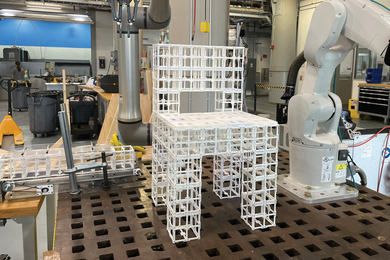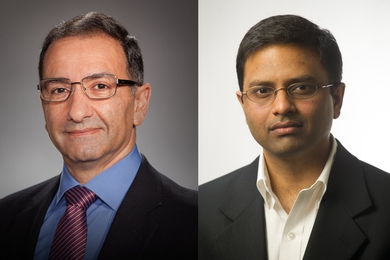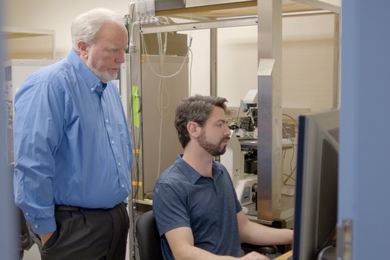MIT has accepted 377 or 12 percent of 3,098 applicants for early admission to the Class of 2010, continuing a long-term increase in selectivity while doubling the percentage of underrepresented minority students to 27 percent.
The Class of 2009 has 14 percent underrepresented minority students; the Classes of 2006, 2007 and 2008 have 20 percent.
Dean of Admissions Marilee Jones attributed the Admissions Office's signal success in building diversity this year to intensified recruitment efforts, staff reorganization and the addition of top admissions officers from competitor schools.
In explaining how admissions officers view the numbers, Jones noted that increasing MIT's "yield" rate -- that is, increasing the number of admitted students who actually join the class -- was a goal of her staff. The Admissions Office has focused on selecting students who will be the "best match for us," said Jones. Their efforts have succeeded, as gauged by the rising number of admitted students who choose to come to MIT. But there's a downside to this selectivity -- fewer students are actually admitted, she said.
"It is true agony for our staff to turn away more and more extraordinary students each year," she said.
Early admits to the Class of 2010 resemble recent MIT classes, with 53 percent male and 47 percent female students -- mirroring the Class of 2009 -- and with the admitted early applicants making up about 30 percent of the whole class. About 75 percent of the class graduated from public high schools.
Of the 3,098 students who applied for early admission in the Class of 2010, 2,371 were deferred and 216 were denied admission. Those who were deferred will be considered for acceptance along with the pool of general applicants. Early acceptances have until the regular reply date of May 1 to decide whether to join the Class of 2010.
In analyzing this year's uptick in early applicants, Jones noted the Admissions Office's "very big presence in cyberspace with our MyMIT site and the blogs within it and also the early application and early decision rules of our main competitor universities: Harvard, Yale, Stanford, Princeton and Caltech."
Unlike most Ivy League schools, MIT offers a nonbinding early action program; prospective students may apply simultaneously to other universities and are not obligated, if admitted early, to accept, Jones explained.
By contrast, since 2003, Harvard, Stanford and Yale have offered nonbinding early action programs but have not permitted early applicants to apply elsewhere. Other Ivy League colleges prohibit multiple early action applications and "bind" early applicants to take the space, if admitted.
Jones emphasized the rigor and thoroughness of MIT's admissions procedures as officers identify students who will thrive at MIT. Numbers are one way to measure the success of this effort; the yield rate keeps going up. But they don't measure everything, she said.
There's an art to the process, too.
Admissions is making an effort "not to be overly driven by SAT scores and grades. Match is everything if students are to be happy and thrive at MIT," Jones said.





